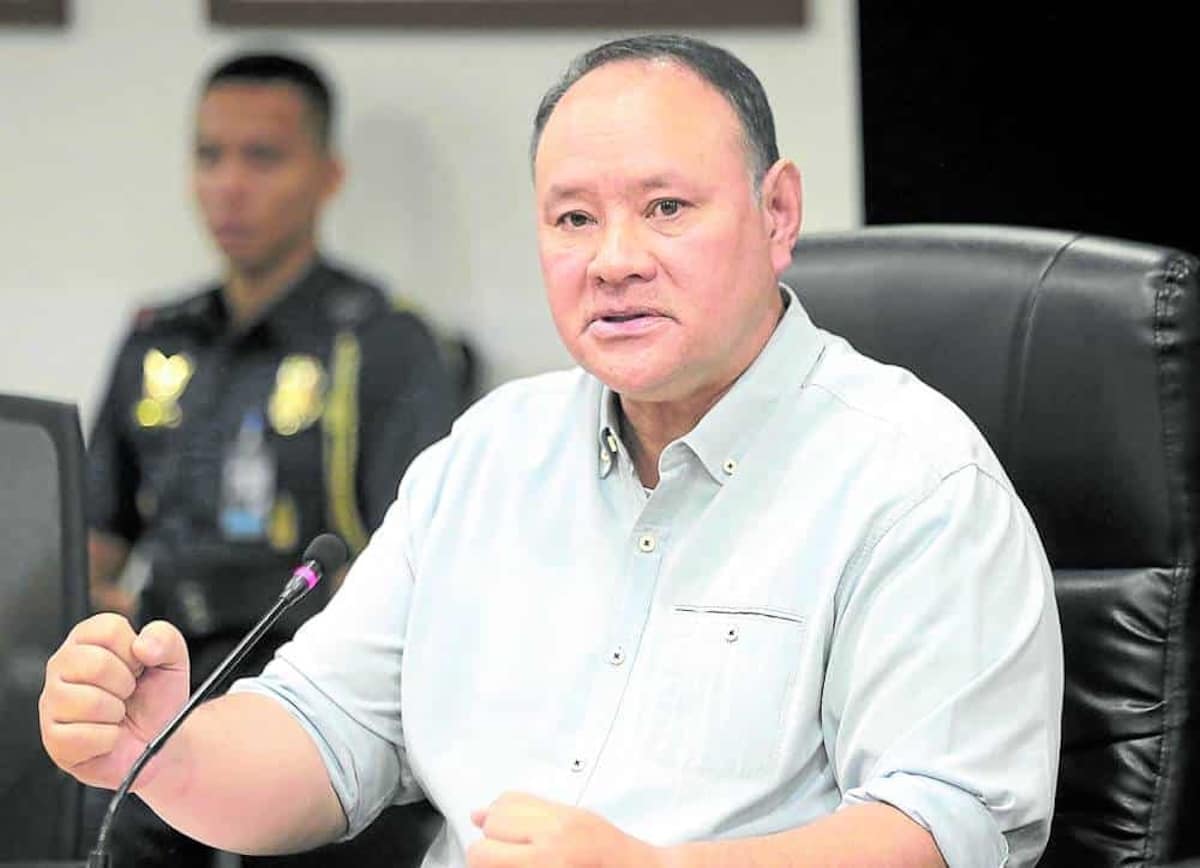Teodoro on transfer of Japanese destroyers: Depends if they fit fleet

Defense Secretary Gilberto Teodoro Jr. — Photo by Grig C. Montegrande/Inquirer
MANILA, Philippines — The country’s acquisition of used destroyer escorts offered by Japan depends on several factors like how it would fit in the existing naval fleet as well as retrofitting costs.
Defense Secretary Gilberto Teodoro Jr. made the point on Tuesday as the country scrambles to bolster the capabilities of its navy amid continuous Chinese aggressions in the West Philippine Sea.
“Of course, it will add to the fleet size,” Teodoro said in a press conference at an event in Taguig City.
“However, the decision process will have to depend on the fit that it will have with our present fleet and how we can integrate them, if ever,” he also said.
Teodoro said it would depend “on whether we need to spend money” in modifying it, noting that the upgrade of all weapon systems of existing naval vessels is continuous while the building of onshore systems for upcoming brand new warships are also ongoing.
“So it’s a balance,” he said. “It’s a resource management balance between acquiring new and maintaining and repurposing the old and the ordered vessels to come.”
Inspection
On Sunday, Japanese publication Yomiuri Shimbun reported that “multiple Japanese government officials” revealed that both Tokyo and Manila have agreed for the former’s export of the six-used Abukuma-class destroyer escorts.
Navy spokesperson Capt. John Percie Alcos, in another regular press conference on Tuesday, said the joint visual inspection (JVI) of the naval ships will be held in August upon the official invitation from the Japan Ministry of Defense.
READ: PH Navy to inspect Japanese warships before ‘possible transfer’
“The inspection, from the schedule that I have seen, will last around two weeks,” Alcos noted. “The objective of the JVI is to determine the operational viability of the transfer.”
Similar to Jose Rizal-class frigates
Alcos pointed out that the characteristics of destroyer escorts, designed for anti-submarine and anti-ship warfare, are also similar to that of the Philippine Navy’s flagship guided-missile frigates.
“This is very similar in terms of gross tonnage, speed, [and] length to the Jose Rizal-class frigates,” Alcos said of the destroyer escorts. “These destroyer escorts also have specific capabilities that we require.”
The Jose Rizal-class frigates have about 2,600-ton standard displacement and are 107 meters long, while Abukuma-class destroyer escorts have about 2,000-ton standard displacement with length of 109 meters.
In view of this, Alcos noted that the destroyer escorts, built between 1988 to 1991 and set to be decommissioned in 2027, remain in good condition despite their age.
“These are 30-year-old vessels that are still operational until such time that they were decommissioned,” Alcos said.
“We have a strong alliance with Japan,” he said. “I do not think they would offer these particular assets if this will not greatly enhance our own capabilities.”
READ: Japan Diet approves reciprocal access pact with Philippines
Both nations have agreed to a Reciprocal Access Agreement, which eases restrictions on the movement of personnel and equipment in each other’s territory. /das
For comprehensive coverage, in-depth analysis, visit our special page for West Philippine Sea updates. Stay informed with articles, videos, and expert opinions.


















